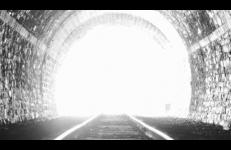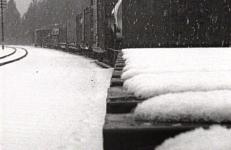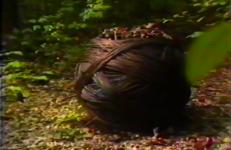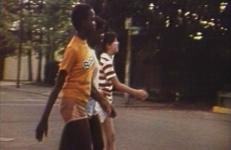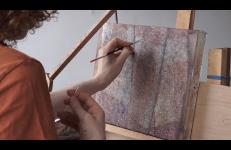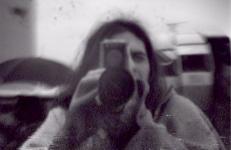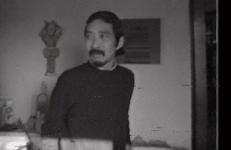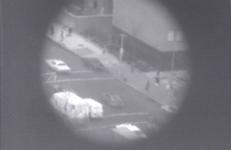The only time I’ve visited a communist country was when I went to Poland in 1980, not long after Margaret Thatcher’s Conservative government was first elected in Britain. I first visited the former East Germany in 1997, eight years after the fall of the Berlin Wall and a few months after Tony Blair's ‘New Labour’ government was elected. Recalling these experiences many years later, White Hole questions our imaginings of life in other places, times and political systems, mirroring its narrative through its form. London and Warsaw, 1980. London and Leipzig, 1997. Where now?
Visual Art
The secret history of hobo and railworker graffiti. Shot on freight trips across the western US over a period of 16 years, Who is Bozo Texino? chronicles the search for the source of a ubiquitous rail graffiti--a simple sketch of a character with an infinity-shaped hat and the scrawled moniker, "Bozo Texino"--a drawing seen on railcars for over 80 years.
Sculptor Jackie Winsor creates large-scale constructions in wood, fiber, twine, and wire. Recent works are subjected to explosions and fire. Winsor lives and works in New York City. Interview by Kay Miller and Albert Alhadeff.
This is a three-part tape shot in 1975, ’76, and ’78 as Winsor was working on three pieces: 50/50, Copper Piece, and Burnt Piece. The rhythms and rituals of her working process as well as her comments on the work are documented. Part III is the only filmic record of the final stage of construction of Burnt Piece.
Women with a Past brings together four 20th Century artists — Yvonne Rainer, Christine Choy, Martha Rosler, and Nancy Spero — in videotaped interviews, shaped and edited by Lyn Blumenthal to examine the art of documentary. In a skillfully woven series of scenes in which the interviewer’s voice is not heard, the interviewees appear to be talking directly, intimately to the viewer. Blumenthal used short segments of each woman’s work to demonstrate how her philosophical and political stances are articulated.
Ellen Altfest is known for her representational paintings in which she renders every detail of her subjects on a one-to-one scale. The World Must Be Measured by Eye follows the meticulous, repetitive and painstaking creative process of Altfest—the painter studies the subject, mixes paint, matches colors, measures the distance and puts the paint on the canvas with a small brush. Through observing Altfest’s practice, The World Must Be Measured by Eye examines the act of creation and the act of seeing.
Videofreex documentation from October 9th, 1971 of a crowd celebrating the opening of the Yoko Ono retrospective exhibition, This Is Not Here, at the Everson Musem of Art in Syracuse, NY. The Videofreex document Yoko Ono’s plane landing and her getting on a bus to go to the exhibition at the Everson Museum. Once at the exhibition, we find a man inside bathing in a bathtub, who is then forced to exit by a museum official.
As a well-known painter and collagist, teacher at the School of the Art Institute of Chicago and mentor to the Chicago Imagists, Ray Yoshida (1930-2009) had far reaching influence. In this interview, Yoshida offers a tour of his home, showing us the unique dolls, masks, trinkets and tattoo art from which he drew inspiration. Describing his own stylistic progression from the late 1950s to the early 1970s, Yoshida also talks about the collage aesthetic and persistence of visual complication in the Chicago Imagist style, demonstrating its various permutations by showing off his collection of works by former students at SAIC. A lover of curiosities, Yoshida also describes discussions he had with Chicago artist Roger Brown about opening a museum for their vast collections of oddities.
— Kyle Riley
Perceptual concerns predominate in my videoworks. In Locating #2, Zeroing In, and Points of View, large outdoor spaces — as much as five miles in depth and one mile in width from fifteen floors up — are spanned on the video screen. Space is flattened and contracted. By placing a prop (a movable tube or a piece of cardboard with holes that open and close) in front of the camera, I block off most of the static camera view, leaving one or more circular images to come and go.




